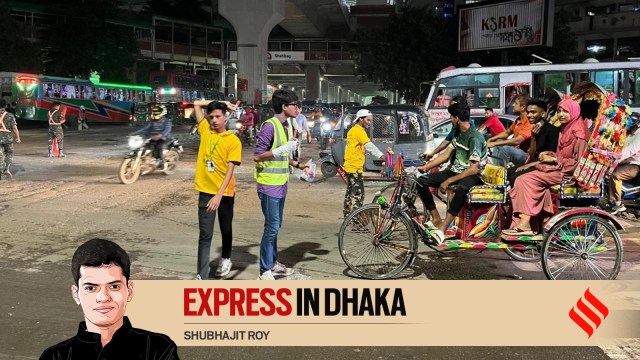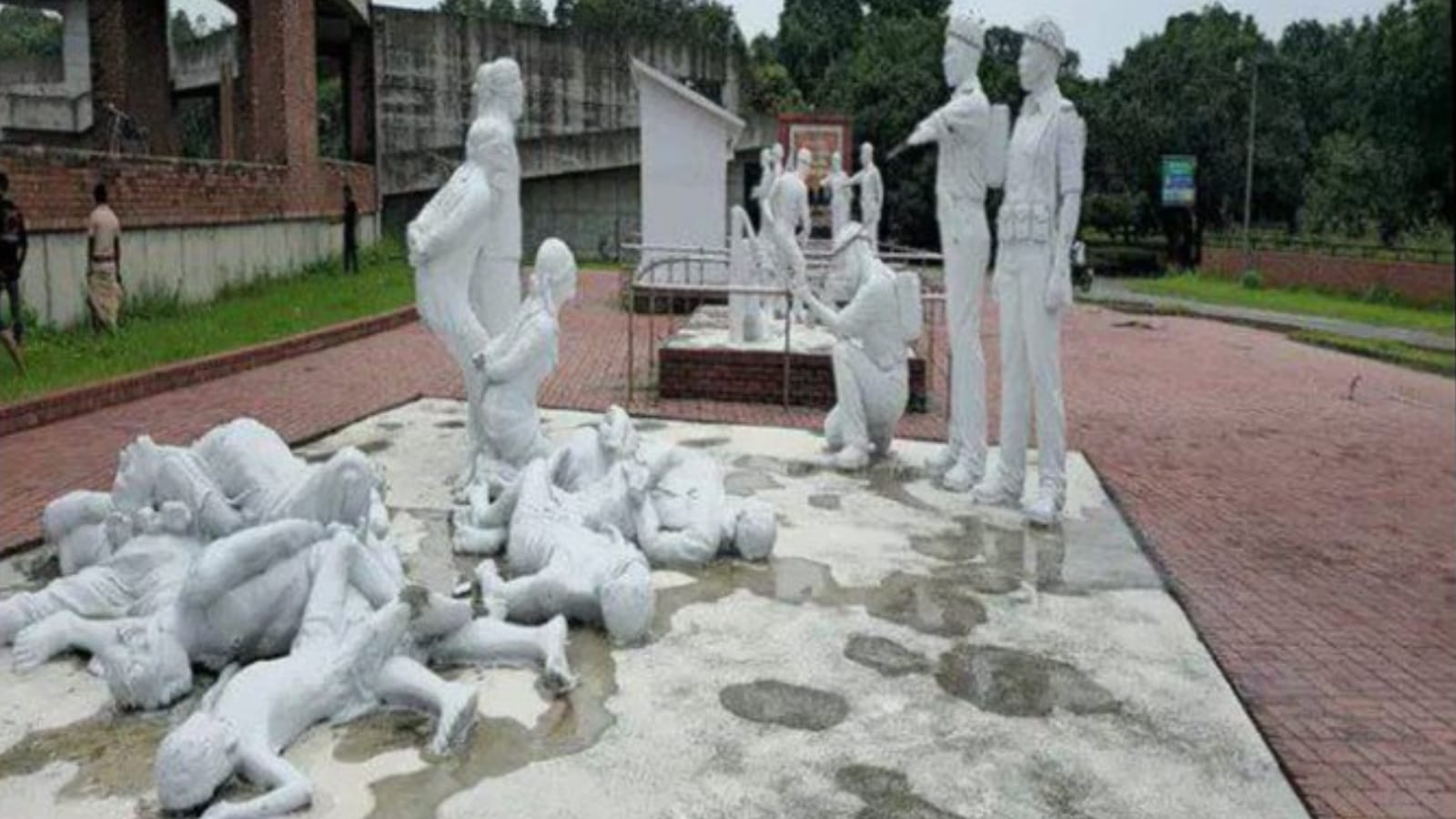Until exactly a week ago, Obhik, 19, was among the students who hit the streets in protest against the then Sheikh Hasina government. Today, he is back on the road — this time as a student volunteer, supervising the traffic in the busy Shahbag area, next to the Dhaka University campus.
If a week is a long time in politics, the last seven days in Dhaka mark a veritable change of era.

Stunning speed has marked the regime change: from Sheikh Hasina leaving the country to an interim government being put in place under Nobel Laureate Muhammad Yunus — to a new Chief Justice being sworn in Sunday.
“We got rid of the government, now we will have to take up the responsibilities. My feet hurt but it is our responsibility to serve the people,” says the second-year student of architecture, who suffered a fracture in his right arm facing lathicharge and teargas when he was on the other side of the picket lines.
It is the first day of the working week and roads are busy. Obhik says he’s been on traffic duty since 11 am, and was at his post till evening despite a drizzle.
Facing the wrath of the people for siding with the government and shooting at protesters, the police are not turning up for work.
Last Sunday, more than 100 people had died, mostly student protesters. A week later, Dhaka bears signs of the chaos of the last weekend and the Monday that followed, when Hasina resigned and fled to India after ruling Bangladesh for more than 16 years.
Story continues below this ad
After the interim government, was sworn in, the writing on the Dhaka wall has changed.
 Pictures of vandalised statues of 1971 Indian Memorial Complex inn Bangladesh.( @X/Shashitharoor)
Pictures of vandalised statues of 1971 Indian Memorial Complex inn Bangladesh.( @X/Shashitharoor)
The Metro pillars have been spray-painted with graffiti like “Khooni Hasina” (murderer Hasina), “we won, oi Hasina koi geli” (Hasina, where have you vanished).
Her father and founder of Bangladesh, Sheikh Mujibur Rahman, hasn’t been spared either. Right outside Dhaka’s Hazrat Shahjalal International Airport, his mural lies shattered in pieces. Hasina’s supporters say statues across the country have been destroyed, including some in the heart of the capital.
“She would invoke his name at every juncture, to justify her actions. So, there was pent-up anger against her that made the mob do such things,” says an official who works at the airport.
Story continues below this ad
A professor at Dhaka University says the students’ agitation was used by some fundamentalist forces to carry out such acts.
“We also respect Bongobondhu, but Sheikh Hasina’s actions made people angry. And this was a spontaneous reaction as a release of that anger,” says student Arsuda, who is also manning the traffic near the airport.
Hasina, who brought some political stability and economic growth in Bangladesh, is hated on the streets today for the authoritarian turn she took, which saw her going after the Opposition, civil society and the media in the last decade of her government.
On Sunday, one of the Opposition leaders, BNP’s Salahuddin Ahmed, returned to Bangladesh after nine years of living overseas.
Story continues below this ad
“After crushing dissent for so many years, people thought that she was invincible. But the students brought her down as they felt stifled. The youth wing of the Awami League was unleashed on the student protesters, including girl students who were manhandled,” says Tasnim Siddiqui, a professor of political science at Dhaka University.
The assault of the young women students was the “inflection point”, she says, as it provoked the student protesters, bringing them on a collision path with the police and pro-Awami League students’ wing. “But when (Mujib’s) statues were destroyed, we cried… the actions were in nobody’s control,” Siddiqui says.
Mesbah Kamal, a professor who taught history at Dhaka University and is now Vice-Chancellor of a private university, draws parallels with the student protests in 1969 that led to the downfall of Pakistan’s military dictator General Ayub Khan.
“Ayub Khan had carried out a lot of development work in east Pakistan, but people wanted their right to speak and (protection of their) human rights. Hasina, too, had carried out several development works but she turned very harsh on the students. This kind of violence against students had not happened even during Ayub Khan’s time,” says Kamal.
Story continues below this ad
Outside the university campus, at the Shahbag junction, volunteers distribute packets of snacks — a slice of cake, a packet of biscuits and a bottle of water – to the students manning the traffic.
As the skies turn dark, they ask the women volunteers to go home. “It’s too risky for girls to be out after dark, so we are asking them to go home. They too have been up on their feet and managing the traffic since morning,” says a volunteer.
There are rows of flower shops nearby, and the evening breeze fills the place with their fragrance. A young couple takes a selfie — with the flowers — before heading home.



 Pictures of vandalised statues of 1971 Indian Memorial Complex inn Bangladesh.( @X/Shashitharoor)
Pictures of vandalised statues of 1971 Indian Memorial Complex inn Bangladesh.( @X/Shashitharoor)





